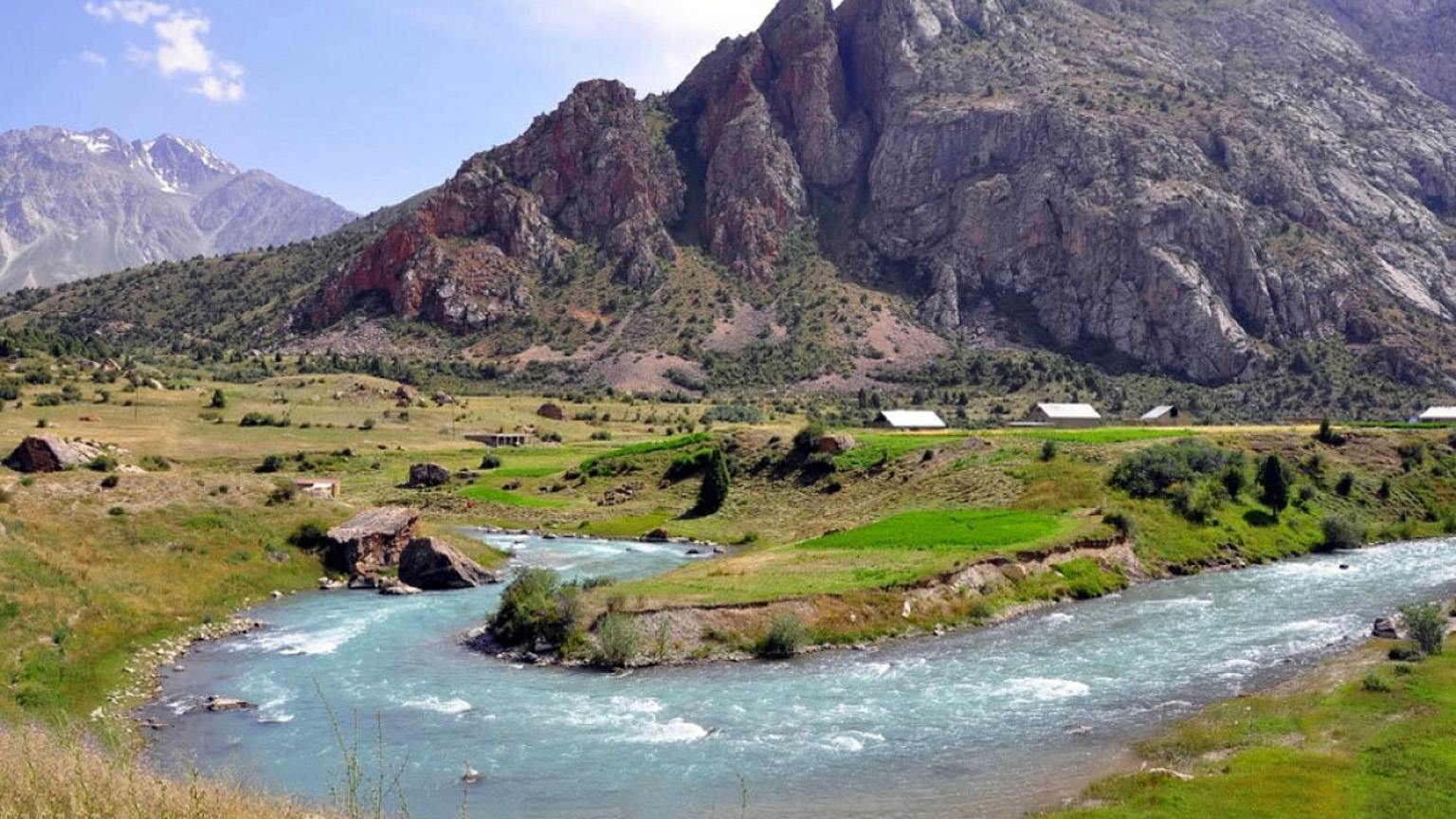


The city of Punjakent, whose name translates as "five villages", is located in a picturesque valley of the Zeravshan River. It is believed that the history of the city originally came from these five villages. The then city was one of the most important cultural and handicraft centers of Sogd. It was even referred to as the "Pompeii of Central Asia". It was an excellent city with the ruler's palace, two temples, markets, magnificent houses with numerous paintings, wooden statues of ancient gods. The city was destroyed by the Arabs in the 8th century. The ruins of the ancient city were only found in the last century. Today tourists can admire the remains of the residential houses and important buildings, the citadel with the palace, the craftsman's house and the Zoroastrian church.
Punjakent is located on a five-kilometer-wide plain in the valley of the Zerafšan River and was once a trading town on the Silk Road in close connection with Samarkand, about 60 kilometers away. The city has a university and a hospital and is the seat of several regional administrative authorities. Development aid organizations such as Welthungerhilfe also maintain offices. Close economic ties existed with neighboring Uzbekistan until independence, but these are currently interrupted by the closure of the borders.
MEDRESE ALIM DODCHO: The Medrese Alim Dodcho was built in the 18th and 19th centuries. Century and is located opposite the bazaar.
RUDAKIMUSEUM: The museum in the center of the village shows finds from the old Sogdian town of Punjakent and the excavation site of Zerazm. In addition, some rooms provide information about the history of the region and the native fauna of the Zerafšantal. Another room is dedicated to the life and work of the Persian poet Rudaki.
OLD TOWN PANDSCHAKENT
Next to the modern site are the ruins of a Sogdian city that has been excavated since 1947 and is an important archaeological site in Tajikistan. Their area was once about 19 hectares, of which about a third have now been excavated. The old city had its heyday especially in the 7th and 8th centuries AD, when it was on the Silk Road and was the capital of a Sogdian principality. It was destroyed by the Arab conquest of the country. After that it was only inhabited for a short time.
The city proper was surrounded by a wall eight meters thick. Next to it was the citadel where the local rulers lived. Outside the walls was a suburb and the city of the dead. The residential town consisted of two to three-story buildings.
The excavation site is characterized by good conservation conditions. Many wooden objects (furniture, sculptures) are still in remarkable condition. The peculiarity of the site, however, are wall paintings that were found in the houses of the upper class and in the temples of the city. The name Pompeii of Tajikistan is derived from this.
The core of the residential city are two temples, each standing on a platform and surrounded by a wide courtyard. They were richly painted. The deities worshiped here remain unknown. The center of the houses of the upper class was a ballroom, which was largely illustrated, with mostly epics being depicted here. The ballroom was often furnished with ornate wooden pillars and an artistically paneled ceiling.
Buddhist, Zoroastrian and Manichaean influences can be read from the paintings, a mixture of Eastern and Western stylistic elements that often depict the struggle of good against evil. Most of them are now in the Hermitage in Saint Petersburg and in the Museum of Antiquity in Dushanbe. For the conservation of the excavation site itself, the effort is considered too high. Artifacts are recovered and the ruins are left to their own devices.
AROUND PANDSCHAKENT
ZERAZM: 15 kilometers west of the city is the Zerazm archaeological site. In 1976, the remains of a prehistoric settlement from the 3rd or 2nd millennium BC were discovered here. The settlement covers a size of approx. 130 hectares and consisted of adobe houses. During the excavations led by the archaeologist Isakov, numerous tools, knives, axes and weights were found. The origin of these pieces from India, Afghanistan and Iran indicates that the former residents had trade contacts. The most remarkable find is the "Princess of Zerazm", in whose grave there were pearls made of lazurite and various pieces of jewelry. Today these finds are in the Museum of Antiquity in Dushanbe.